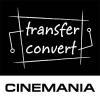Leaderboard
Popular Content
Showing content with the highest reputation on 05/29/2014 in all areas
-

Potential film score licenses from EOSHD
nahua and 2 others reacted to Andrew Reid for a topic
I am in talks with some professional musicians and film scorers here in Berlin and have discovered some real talent... The average quality of their work far exceeds the current music licensing libraries and it is more original, more interesting. I am thinking therefore some kind of music licensing service might be useful to offer on EOSHD especially with the Vimeo copyright problem filmmakers are facing. I don't want to see people sued for copyright infringement when they are just trying to express themselves and their art. Some of the pros I know here are doing really high end audio - we're talking Hans Zimmer & feature film standard. However these are professionals and we need to pay them. It is simply not going to wash using a track for free that took them 6 months of recording time in studios that charge $400 per day. I'm wondering what a fair and acceptable rate would be for licensing? I want it to start low to be accessible to artists but scale up to commercial work in the right way. Typical prices at the Music Bed range from a minimum of $50 for non-profit to $399 for commercial work and for larger scale commercial work custom quotes are required. EOSHD music licensing would be different. For personal work or zero budget short films on Vimeo / YouTube (non-commercial) $19 - 1 track $50 - 5 tracks $99 - 10 tracks For commercial work - small clients (<10 employees) and non-profit organisations $50 - 1 track $99 - 5 tracks $199 - 10 tracks For commercial work - large clients (>10 employees) and advertisements $199 - 1 track $399 - 5 tracks Custom quote - 10 tracks For features, documentaries and short films with a crew $199 - 1 track $499 - 5 tracks Custom quote - 10 tracks Of course before you buy you can play all tracks in full on EOSHD to see if they are what you need. I'd like some feedback on this first before I decide to go ahead with it or not as the amount of work involved here is very significant. In particular what do you need from such a service? What projects do you need music for... And what do you think of the pricing? Cheers!3 points -
Nice review Andrew! The GH4 deserves the positive feedback after Panasonic listened to filmmakers and delivered what was asked for at a reasonable price! I've been looking for a camera to supplement or replace the 5D3 for video for a long time. The first attempt was the FS700 + SpeedBooster. The idea was find a camera which has true 1920x1080 resolution and full frame compatibility with my Canon lenses. At the time I had not studied the math and physics and wanted to maintain the mystical and oft-hyped FF "look". You mentioned " 5D Mark II and III raw from full frame sensor a formidable cinematic look vs the smaller sensor in the GH4". The "formidable cinematic look" is a myth. Perhaps a better way to say is that the full frame format has more affordable and flexible options for shallow depth of field- as that is all it really offers in absolute terms of sensor size. Canon's color science is still a formidable challenge. In low light, the GH4 has a nicer noise pattern. 5D3 RAW has some fixed pattern noise and the general noise itself gets downright ugly in low light. The newer GH4 does a better job with noise once it shows up. If I find the time I'll post tests comparing the 5D3 RAW with the Canon 50mm 1.4 at F2 to the GH4 with a Voigtlander 25mm F.95 at .95 (same as the 5D3 at 50mm F1.9 per the math here (which isn't anything new; I finally took a look at it after the Northrup video was posted on EOSHD: '?do=embed' frameborder='0' data-embedContent>> ). The GH4 looks fantastic straight out of the camera when set up and lit correctly. This is something I find valuable and useful. 14-bit 5D3 RAW offers far more options in post, especially when using ACR vs. the comparatively fragile GH4. The RAW workflow might be called "Really Awful Workflow" due to the extra time and storage requirements. That said, for some shots and projects, the extra work is worth it. Regarding GH4 10-bit luma and 444 for 4K scaled to 1080p: the 444 is real, the 10-bit luma is not in practice. 10-bit color processing doesn't take place in the GH4 unless 10-bit 422 is enabled for HDMI output, otherwise processing for video is 8-bit. In order for the 10-bit luma to be real, we'd have to do special encoding in the camera which we could then recover in post (while reducing luma resolution 4x). Otherwise we're just getting a nice, useful, low-pass filtered, noise reduced luma in the same way as the C100/C300. When comparing to the Sony A7S- the example A7S videos appear to produce excellent, detailed, color accurate, high-dynamic range footage straight from the camera. The bitrate is only 50Mbit/s, however as we've seen with 100Mbit/s GH4 4K, which is 4x the pixel data(!), these bitrates are OK as long as motion is smooth. Even the 24Mbit/s FS700 footage compares very well when the motion is smooth. As many of us have noted, even with large, cheap storage, efficiency is important in the long haul. As I'm sure future tests will show, 50Mbit/s A7S in-camera 1080p will compare very well to the GH4 4K scaled to 1080p in post. The A7S appears to have a dynamic range advantage, and the color science so far is very competitive, even against 5D3 RAW. The GH4 with fast micro 4/3 lenses has a size/portability/stealth advantage. In the event 4K material is needed (vs. 1080p scaled in post), the GH4 has the advantage (including reframing in post). Neither camera 'wins'- they have complementary features. The A7S compared to the 5D3 RAW- that's another matter: the A7S will best 5D3 RAW in resolution, detail, dynamic range, and workflow. What remains to be seen is final color science (rolling shutter will likely be a wash between the two).3 points
-

Potential film score licenses from EOSHD
Rudolf and one other reacted to Andrew Reid for a topic
Correct, commercial work = paid work. Reward the musician not just yourself :)2 points -

Van Diemen Cine-Iscorama Conversion - Review.
Tito Ferradans and one other reacted to Rcorrell for a topic
Lucian a few months ago PM'ed be about the VD mod and vignetting questions.. I never posted my response publicly, but now I can see that many people are wondering the same questions / solutions, so I thought my 2 cents might be helpful for some readers... So here it is... Sooo, yes... VD mod does create more vignetting than the original pre36 isco does on its own. It does this no question. However there is a way to work around it. At first i was surprised to see the difference in many of my taking lenses i had used before i got the mod done, however it was only effecting picture on a 50mm-60mm scale on full frame sensor. Now a few elements are what makes this problem occur... VD does build the mod with the screw-on portion of the rear element flush to the actual lens rear element. Pro : protects the rear lens element more so from scratches dings dents etc, also no use now for multiple stepup rings, filter rings etc. Con: As everyone has been talking about lately, it does create a vignette on the widest taking lenses because of extended rear thread. also the bigger and deeper your wide angle taking lenses are, the more vignette you will get. Diopters will also add to this problem, just making the lens longer in front. FIX: pancake lenses!!. the smaller the better. I use a 50mm nikkor f1.8 pancake at my widest on full frame 5Dmkiii, and its fine. no more vignette. it's something thats a pain at first but once you get setup, no going back from VD version, its a real lens now. Invest in some pancake lenses, they solve this problem and are very cheap usually. I've also done some experimenting with it using my mamiya 645 medium format camera lenses. Because they are made for a 6x4.5 coverage, they are rated at 35mm full frame sizes but are actually "wider" on medium format then full frame. The glass elements in the lenses tend to be bigger than 35mm lenses and they made really nice longer pairing lenses for my Isco. my favorite being the 210mm f4 mamiya seckor C that becomes a really nice 140mm when in anamorphic, and is tack sharp. Now in the APS-C size world, i think it's great. I've played with it a lot on that size and haven't ran into a problem yet. So depending on what lens and camera combination you are using with VD Isco, you might not have problems at all, or if it's full frame, you have to rethink your taking lens collection ;)2 points -
I think the big secret is a Metabones Speed Booster that gives the GH4 hybrid tea/coffee making features.2 points
-

Vimeo to automatically mute videos with 'unlicensed' soundtracks
andy lee reacted to Andrew Reid for a topic
That's a bit like saying you shouldn't ban a dangerous driver because TECHNICALLY it is the bumper of their car that hit the old man at 60mph. Google need to shoulder some responsibility because regardless of technicalities they ARE promoting piracy.1 point -

Vimeo to automatically mute videos with 'unlicensed' soundtracks
andy lee reacted to Andrew Reid for a topic
I am surprised at how long Google have been promoting the Pirate Bay in their search results. Incredibly damaging. When crime is so obviously cut and dry like with an illegal download site such as that, it's a no brainer really isn't it? Take a stance Google!1 point -
Best small camera for 1080/60p - Panasonic GX7 and A6000 review
Andrew Reid reacted to A2T2 for a topic
The sensor size is irrelevant because the Gx7 just performs so much better in every way, it also has 3 stops of recovery minimum in shadows in stills and a6k you can barely pull a stop without ugly banding. Add in the shadow and HL tool, the touch control etc etc and the a6k is actually not that good overall, iq is certainly better from the Gx7 and I own both cameras, sorry.1 point -

Vimeo to automatically mute videos with 'unlicensed' soundtracks
andy lee reacted to Nick Hughes for a topic
There is a big discrepency here between the way things are and the way things should be in terms of copyright law, and I think a lot of people are forgetting that. The fact that the copyright system is broken doesn't invalidate it's legal implications. I do think that Vimeo's process kind of sucks and needs refinement. I do a ton of music videos for bands that put their music on CDBaby- YouTube almost always flags my videos as having 'third-party content,' but the dispute process is straightforward and has never created any issues for me.1 point -
Whats worse than kids who've grown up with the expectation of free content, is fellow artists not respecting each others work. I want it too, but the record industry and musicians don't owe anyone cheap access to licensing their work. I also want a Porsche, doesn't mean it should be reasonably priced. Music bed and marmoset are getting much better.1 point
-
The EOSHD Panasonic GH4 Shooter's Guide - Now Available
EvilMonkey reacted to tungah for a topic
Andrew, I'd like to thank you for the great work on the guide. It's very comprehensive and straightforward. However, I too think it lacked a bit on the grading side of things. Although I do understand and agree with your reasoning for not delving too deep in the issue on the guide, my feeling is, since you praised the gradability for the camera so much on your preliminary reviews and the main one, it'd be very nice to have more in depth notion on how to deal with the h.264 coming out of this camera specifically. Your experience both in grading and in dealing with this camera would be very welcome, and something not very easy to find elsewhere. I like EvilMonkey's idea of a blog post (or a series of posts) breaking out various situations and workflows. I'm sure you already have enough material to show us. Let alone the new stuff you'll be learning in the coming months. Again, thank you, and keep up the great work! Cheers!1 point -
Speak for yourself only. This is not likely to be the end of Vimeo. It's just a little bit of re-profiling. I for one have liked plenty of video with no copyrighted music tracks in them, and I'm pretty sure I'm not the only one. The muting of the videos with copyrighted music used without permission is not the problem, but the way it is being done is. It can harm even those with their very own soundtracks. Not much point in using the YouTube videos as an example of anything. There is no free lunch, not even in YouTube. The kids in YouTube can get away with the videos because Google take care of the tab. They put links and ads on the videos with copyrighted music. Also keep in mind that in YouTube/Google, the users uploading content are not their clients. The users are the product, the 'cattle' whose metadata and audiences are being sold to the paying clients, mostly advertisers. I don't think Vimeo has the the budget or the might of Google to match their policies. Which is not entirely a bad thing. In a way Google is partially guilty for the kind of controversy visible also in this thread, where especially the younger generations have become clueless about copyright issues and common sense regarding copying and sharing in general. But that's another story, and I don't wish to steer this thread even more off-topic. Suffice to say that YouTube is probably not an ideal example of (or excuse for) anything. Just take a look at the most successful aspiring and pro filmmakers in YouTube, as well as in Vimeo. I don't think you'll find any of them using copyrighted music in their clips without permission. It's a non-issue, really. But even they might, with permission, if it was made easier to do, with a new system of some kind, as described by many commenters ever since the beginning of this topic.1 point
-

Potential film score licenses from EOSHD
andy lee reacted to Andrew Reid for a topic
I agree the distinction between small and large scale commercial work is a bit unnecessary when it comes to music licensing fees. And it is unlikely they will need 10 tracks so I have reduced this to 3 of their choice and for more than that it will be on a case by case basis. Here's the simplified pricing... Personal work on Vimeo / YouTube (non-commercial, non-profit) $19 - 1 track $49 - 5 tracks $99 - 10 tracks Commercial work $199 - 1 track $399 - 3 tracks Custom quote - more than 3 tracks Features, documentaries and shorts $199 - 1 track $499 - 3 tracks Custom quote - more than 3 tracks As you can see the pricing for personal work on Vimeo is very low as musicians want to give something back to the community and so I do I. You'd get a lot of use out of 10 tracks for uploading personal work, reels, camera tests, etc. so I think $99 is worth the money, to have that weight off one's shoulders over the legal implications of using non-licensed copyrighted work.1 point -

Is this normal steadicam behaviour?
JohnBarlow reacted to Daniel Acuña for a topic
Yep, JohnBarlow is right I doesn't seem to be well balanced, that's most certainly the problem.1 point -

Lenses
maxotics reacted to JohnBarlow for a topic
An essential tool for filmmakers http://www.davideubank.com/Good_Focus/pCAM_Film+Digital_Calculator.html1 point -

GH4 and BMPCC music video
AaronChicago reacted to sunyata for a topic
So you're using the BMPCC at 00:00:11, 00:00:14, 00:00:21 etc, with the back-lighting shots? Nice work!1 point -

Lenses
Henry Gentles reacted to Michael Thames for a topic
Just bought a Canon 70 -200 f4 IS USM today, I can believe how gooooood it is!1 point -

GH4 and BMPCC music video
AaronChicago reacted to andrgl for a topic
The lighting and grade were killer. But man does the BMPCC just LOVE to kick out that shitty magenta grid pattern when exposed to flares. :/1 point -
Vimeo should risk getting into lawsuit wars with Universal, Warner and EMI so that the hipsters can use whatever songs they choose for their montage videos of flowers, sunsets, and city life? If you are shooting stuff for non commercial reasons, then you don't need to rip off copyrighted material w/o permission. You can go to freemusicarchive.org and find music that fits your scene. And "fair use" in this instance is bullshit since tons of Vimeo work results in monetary gain indirectly (you don't think Phillip Bloom has gotten clients via Vimeo?). How do you distinguish someone making test videos for fun/personal reasons, and someone uploading work with hopes of gaining clients (basically using Vimeo as a marketing tool). It always perplexed me that Vimeo was so lax on people illegally using music. I obviously don't like the new policy because it limits my options, but if you can't see the justification behind this policy... ??? wtf?1 point
-

Potential film score licenses from EOSHD
Andrew Reid gave a reaction for a topic
Cool. I highly approve. As you say the mainstream offerings from the likes of the Music Bed are not for everyone. I think EOSHD would be a superb home for a more artist-orientated setup. By the way - where the hell do you find the time to do all of this stuff? I assume you're either superhuman, insane, or using industrial quantities of amphetamines.1 point -

Panasonic GH4 Review
Xiong reacted to Andrew Reid for a topic
Yeah stills are APS-C quality from the GH4 but without that flappy mirror or the silly optical eye glass thing from 1890! Sensor has a very fine noise in the raw files which is very film like, and ISO 6400 is perfectly usable. I also find the electronic shutter very nice, and once you go back to mechanical shutter on other mirrorless cameras, that feels really dated somehow. Sharpness is outstanding... no AA filter blurriness at 1:1 so the 16MP is easily a match for the 22MP on full frame cameras like the 5D Mark III. In particular all the things that make the GH4 useful for video like the live view system, articulated screen and EVF are just as helpful for stills. I find I shoot better with it than a DSLR, it helps composition to have the DOF preview with the EVF and the tillable screen for low angles. AF is amazing on this beast too... better than a Nikon D4 in most cases actually... You can't say that about live-view AF on a DSLR haha!1 point -
Tiffen filters video demonstration
Michael Thames reacted to Danyyyel for a topic
So this is the future of 4k, because all those advocating 4k will have to learn to use those filters to smooth the sharpness of those 4k sensors, more so on human beings. Tiffen must be rubbing its hand in anticipation of the number of sales coming its way.1 point -
Rich, this is totally astonishing. You are gifted with very much talent! I lost much of my interest for digital cameras during the last year (and I don't understand anything about the technical background) but this... man thats epic!1 point
-

The EOSHD Panasonic GH4 Shooter's Guide - Now Available
Orangenz reacted to Andrew Reid for a topic
My perfected workflow is in the book. The 10bit doesn't need special software, the NLE does the oversampling of 1080p from 4K automatically. Most of the workflow is about the in-camera settings. That's where the secret sauce is. FilmConvert is so simple it doesn't need instructions. It is mentioned in the book and you get 10% off with the link in the book. Also the reason I kept my preferred workflow simple is that otherwise I'd have to accompany the book with a Resolve book and a Premiere book and a Final Cut Pro book as well. We'd be here forever! ISO 1/3 step doesn't have a material effect on the image that's noticeable enough for me to mention it in the book... I prefer to spend my time on the stuff that really makes a difference to the image and your filmmaking in it. Cheers!1 point -
In truth though, it's most likely that the colloquial use, which is related to Apple's marketing will become 'what it means' regardless of science or terminology. So even though it makes no difference at 6 feet away, a retina display will be one marketed at a certain DPI. Eventually the marketing term will die it's own death I'm sure... There's not much point marketing these things though, most people won't buy them for the stats, but they'll buy one if it's all that exists come upgrade time...1 point
-

Panasonic GH4 Review
William Koehler reacted to varicam for a topic
If you have to ask, you can't afford it. :lol:1 point -
Anamorphic noob question
Tito Ferradans reacted to Cineman1 for a topic
I've been giving this some thought myself and here's what I've come up with. It's largely about focusing the viewer's attention. Lets use the film Alien as an example. Alien was shot anamorphically as was Blade Runner as Ridley Scott used to shoot his films in this format. Anamorphic lenses give shallower depth of field for a comparable field of view in spherical thus allowing you to ( or forcing you to) separate the subject matter from the background more effectively. In still photography terms refer to old hollywood portraits by the likes of George Hurrell who are in my opinion unmatched in elegance by any form of celebrity portraiture since. He was shooting with an 8x10 camera with hot lights and usually had razor thin depth of field. This made for intensely beautiful images when used properly. I feel the same is true of anamorphic in Alien, Blade Runner, etc. In alien the shallow focus really helps to create mood and probably made the sets look even better by blurring them out more. On the director's commentary track Mr. Scott even notes the difficulty of the shallow depth of field and points out a shot in which the focus was lost for a moment. I used to instinctively assume that it was better to have all the characters in frame in focus but have since learned that that's not necessary and can often clutter up the shot. I'm constantly surprised now as I watch favorite films shot anamorphically at characters that are out of focus that I never noticed the first few viewings. The smeary effect in the out of focus areas when using anamorphic is also a strong part of the look that I feel most movie lovers probably unconsciously associate with CINEMA. I certainly do...although it's more of a conscious association now. The flares can also be a nice touch but I feel they are best suited to science fiction. Shooting with anamorphic lenses slows you down but the results can be worth it...if you have the time and budget. I also think that the added difficulty of shooting anamorphically forces the D.P. to work in a way that insures better results. It's easier to cut corners with spherical. Ridley Scott shoots spherical now and I personally don't appreciate the look of his films as much as I used to. He can still make an incredibly effective film like American Gangster with spherical but it didn't have quite the magical visual element(s) that anamorphic adds. Anamorphic isn't necessary for me to enjoy a film but I do appreciate when a production uses it. This is of course just my opinion and I'd love to hear what others here think. I'm guessing most of you on this forum will agree but perhaps you have a different take on it.1 point -

Vimeo to automatically mute videos with 'unlicensed' soundtracks
William Guy reacted to varicam for a topic
Maybe there will be a revival of silent film!1 point -
Probably the same thing for me as for many others - I'm experienced with stills workflow, but a beginner when it comes to video. If I remember correctly it was someone on EOSHD (Sean perhaps?) who once recommended me the book "Color Correction Handbook - Professional techniques for video and cinema" by Alexis van Hurkman. I find that book as a very good starting point for myself, and I can highly recommend it to others who are new to color grading.1 point
-
I was going to say, maybe ( I don't know how this forum software works) but maybe you could have sub-forums, rather than single threads, as threads become quite a swamp very quickly. Having sub forums for the topics, and even for individual camera discussion could be a brilliant way to keep things arranged and split administration Quite a lot of other forums i use do this: http://www.thegearpage.net/board Kinda like you do for anamorphic, it could encourage whole sub communities1 point





